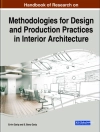A sharp and lively text that covers issues in depth but not to the
point that they become inaccessible to beginning students, An
Introduction to Architectural Theory is the first
narrative history of this period, charting the veritable revolution
in architectural thinking that has taken place, as well as the
implications of this intellectual upheaval.
* The first comprehensive and critical history of architectural
theory over the last fifty years
* surveys the intellectual history of architecture since 1968,
including criticisms of high modernism, the rise of postmodern and
poststructural theory, critical regionalism and tectonics
* Offers a comprehensive overview of the significant changes that
architectural thinking has undergone in the past fifteen years
* Includes an analysis of where architecture stands and where it
will likely move in the coming years
Inhaltsverzeichnis
List of Illustrations viii
Prelude: The 1960s 1
Technology and Ecology 3
Social Underpinnings of Modernism 6
1968 11
Part One: 1970s 15
1 Pars Destruens: 1968-1973 17
Venturi and Scott Brown 18
Rossi and Tafuri 23
The Milan Triennale 27
The IAUS and the New York Five 30
2 The Crisis of Meaning 37
Semiotics and Architecture 39
Five on Five 43
Gray and White 45
Variations on a Theme 48
3 Early Postmodernism 53
The Language of Postmodernism 54
Consummation in Venice 57
European Counterpoints 59
4 Modernism Abides 65
The Chicago High-Rise 65
German Engineering 70
British Renaissance 74
Post-Metabolism in Japan 79
The Special Case of Alexander 85
Part Two: 1980s 89
5 Postmodernism and Critical Regionalism 91
Postmodernism Further Defined 91
Postmodernism Opposed 94
Critical Regionalism and Phenomenology 97
Mérida and Venice 102
6 Traditionalism and New Urbanism 108
The Prince of Architecture 108
The Paternoster Controversy 111
Toward a New Urbanism 115
7 Gilded Age of Theory 123
Poststructural Theory 123
Poststructural Architecture 129
Eisenman and Tschumi 131
8 Deconstruction 141
Postmodernism Undefined 142
Gehry 146
The 68ers Come of Age 149
‚… a devious architecture …‘ 154
Part Three: 1990s and Present 159
9 Wake of the Storm 161
Fragments of Fragments 161
From Derrida to Deleuze 164
Geometry and Autonomy 167
The End of the Figure: Manipulated Grounds 171
Form without Rhetoric 174
10 Pragmatism and Post-Criticality 177
OMA 177
The Orange Revolution 185
Post-Criticality 192
11 Minimalisms 194
Materiality and Effects 195
Neo-modernism 205
Phenomenological Architecture 210
12 Sustainability and Beyond 215
The Green Movement 217
Mc Donough and Yeang 218
Green Urbanism 223
Biophilic Design 226
Neuroaesthetics 229
Notes 231
Acknowledgments 265
Index 266
Über den Autor
HARRY FRANCIS MALLGRAVE is a professor of architecture at Illinois Institute of Technology, and has enjoyed a distinguished career as an award-winning scholar, translator, and editor. His most recent publications include Modern Architectural Theory: A Historical Survey, 1673-1968 (2005), the two volumes of Architectural Theory: An Anthology from Vitruvius to 2005 (Wiley-Blackwell, 2005-8, volume 2 with co-editor Christina Contandriopoulos), and The Architect’s Brain: Neuroscience, Creativity, and Architecture (Wiley-Blackwell, 2010).
DAVID GOODMAN is Studio Associate Professor of Architecture at Illinois Institute of Technology and is co-principal of R+D Studio. He has also taught architecture at Harvard University’s Graduate School of Design and at Boston Architectural College. His work has appeared in the journal Log, in the anthology Chicago Architecture: Histories, Revisions, Alternatives, and in the Northwestern University Press publication Walter Netsch: A Critical Appreciation and Sourcebook.












